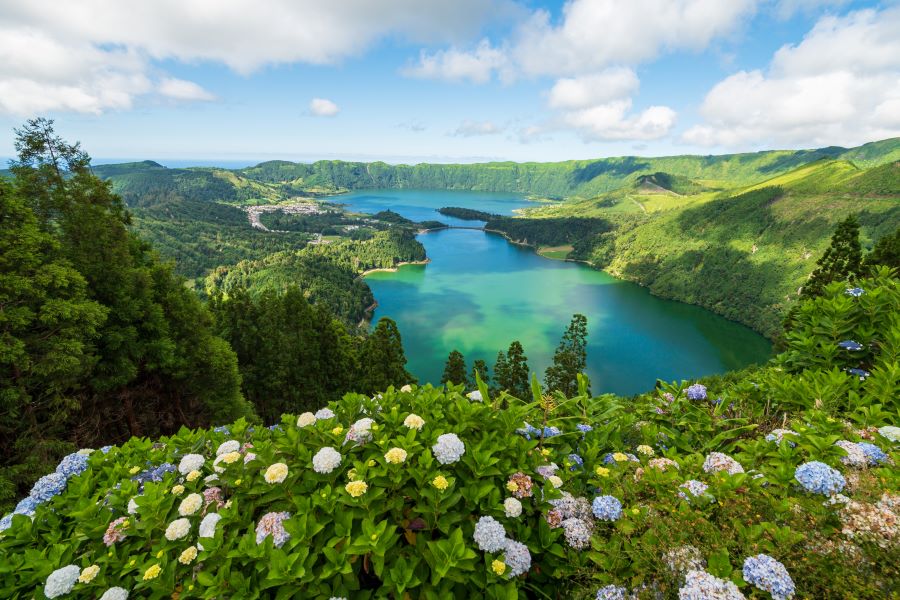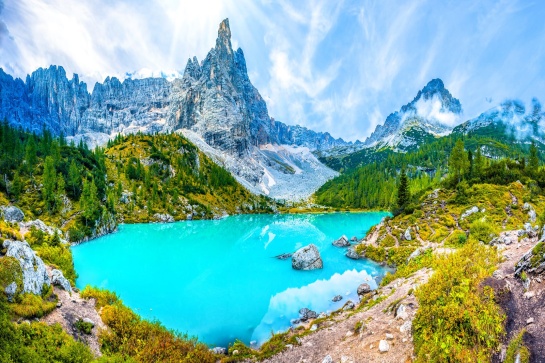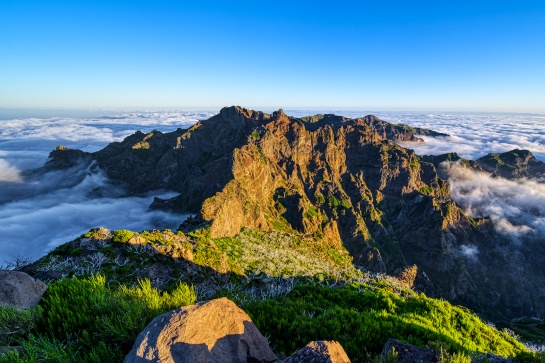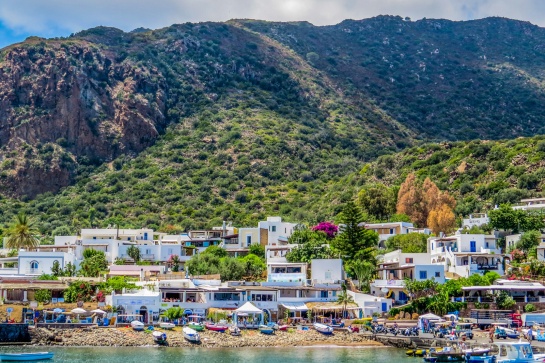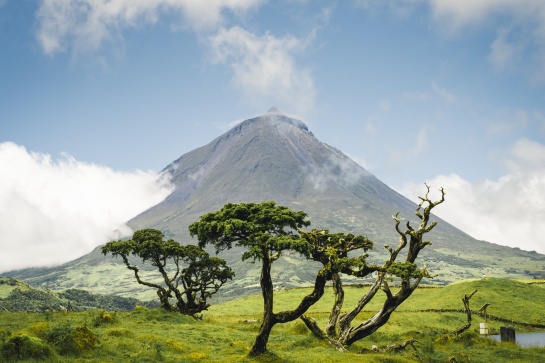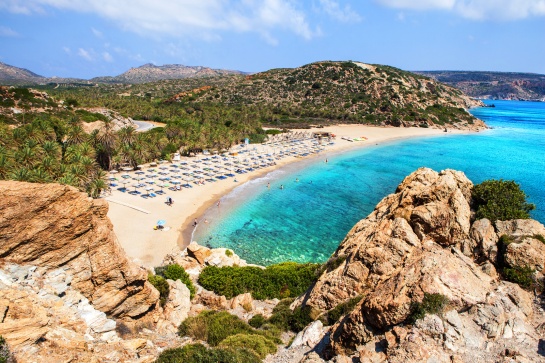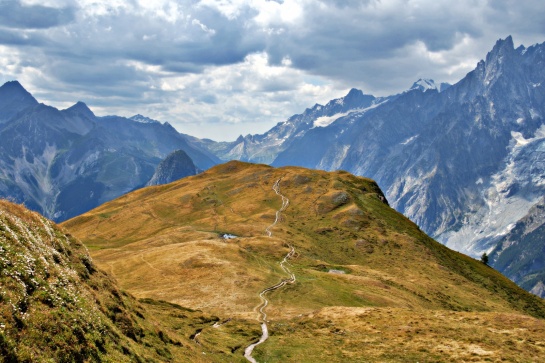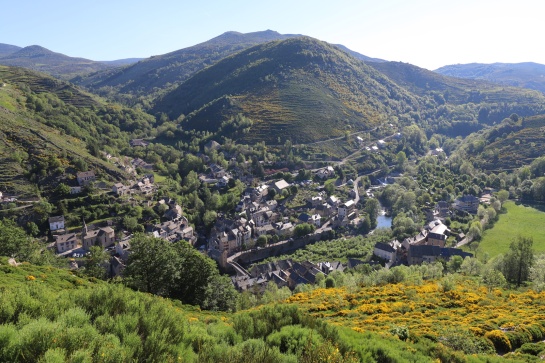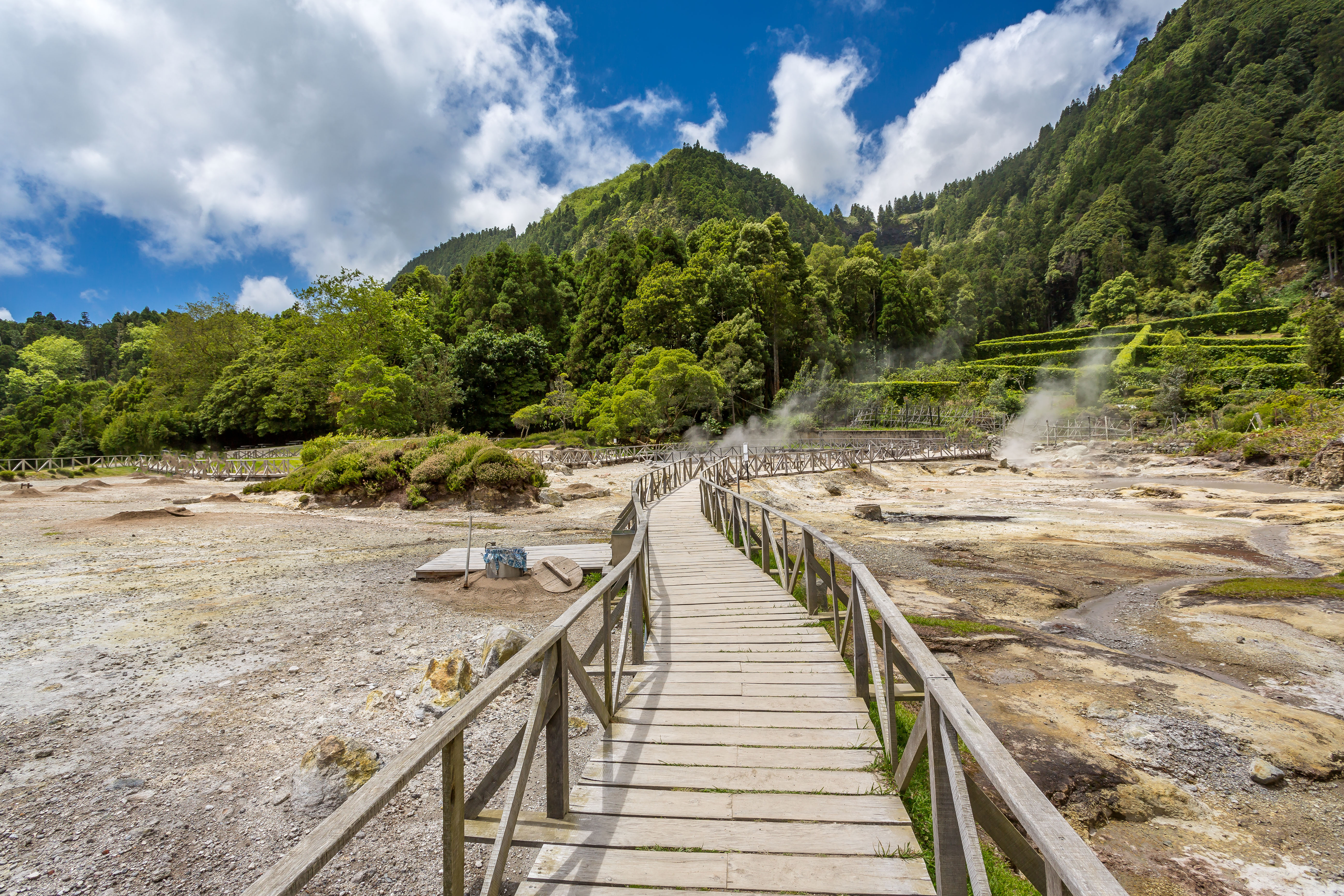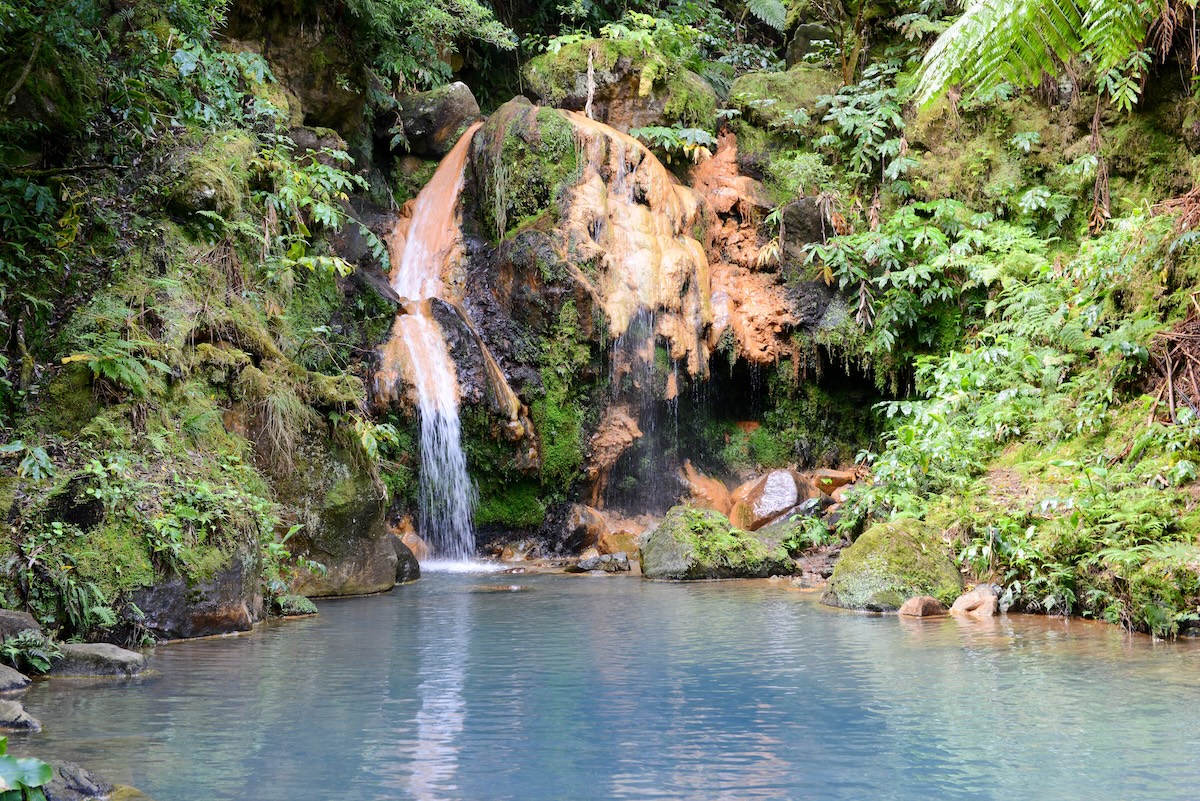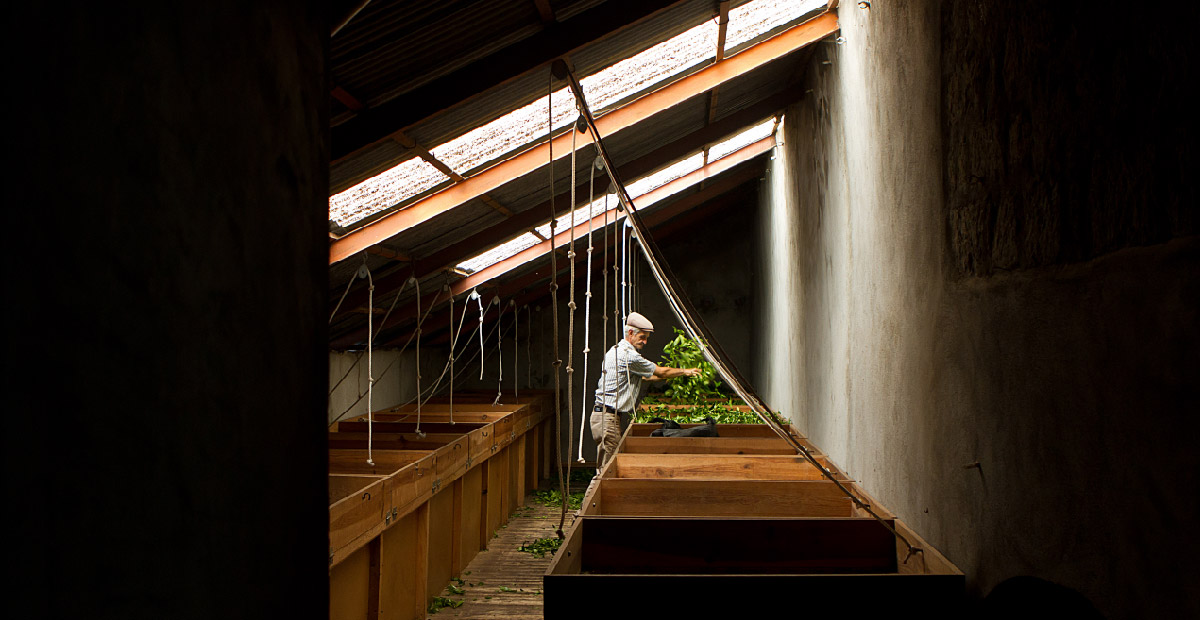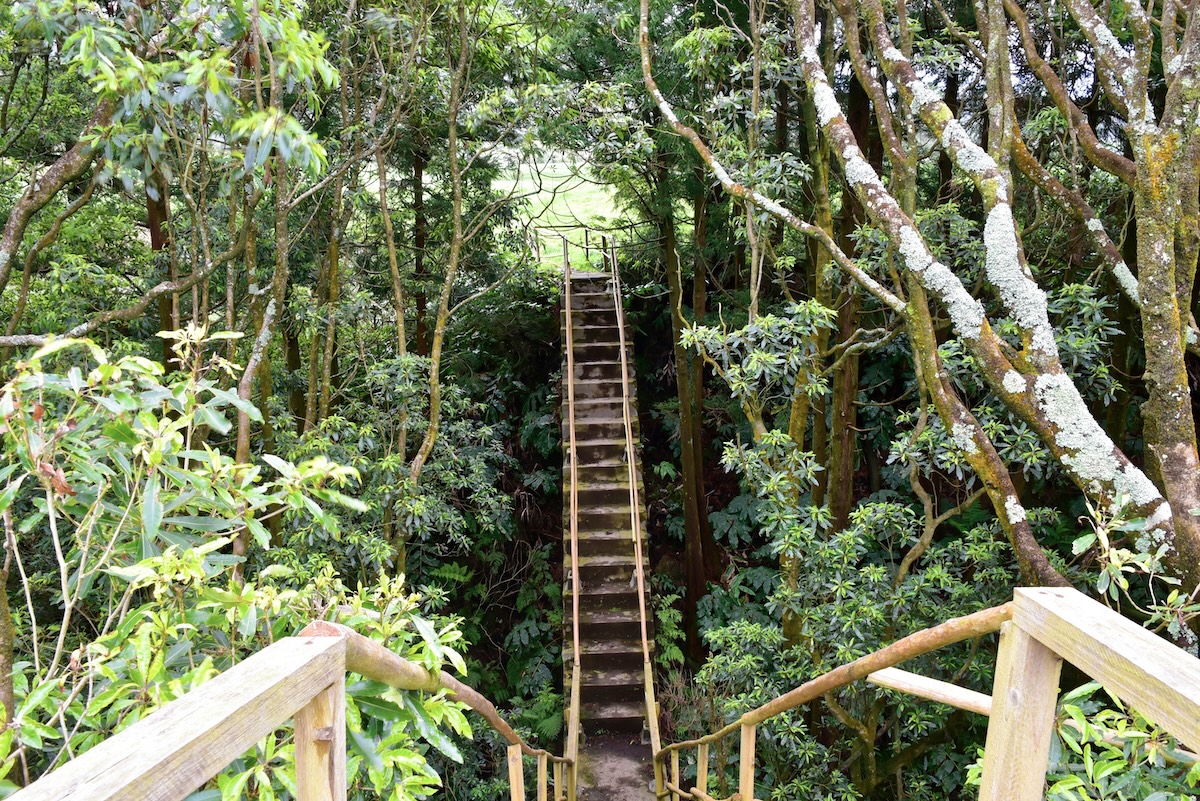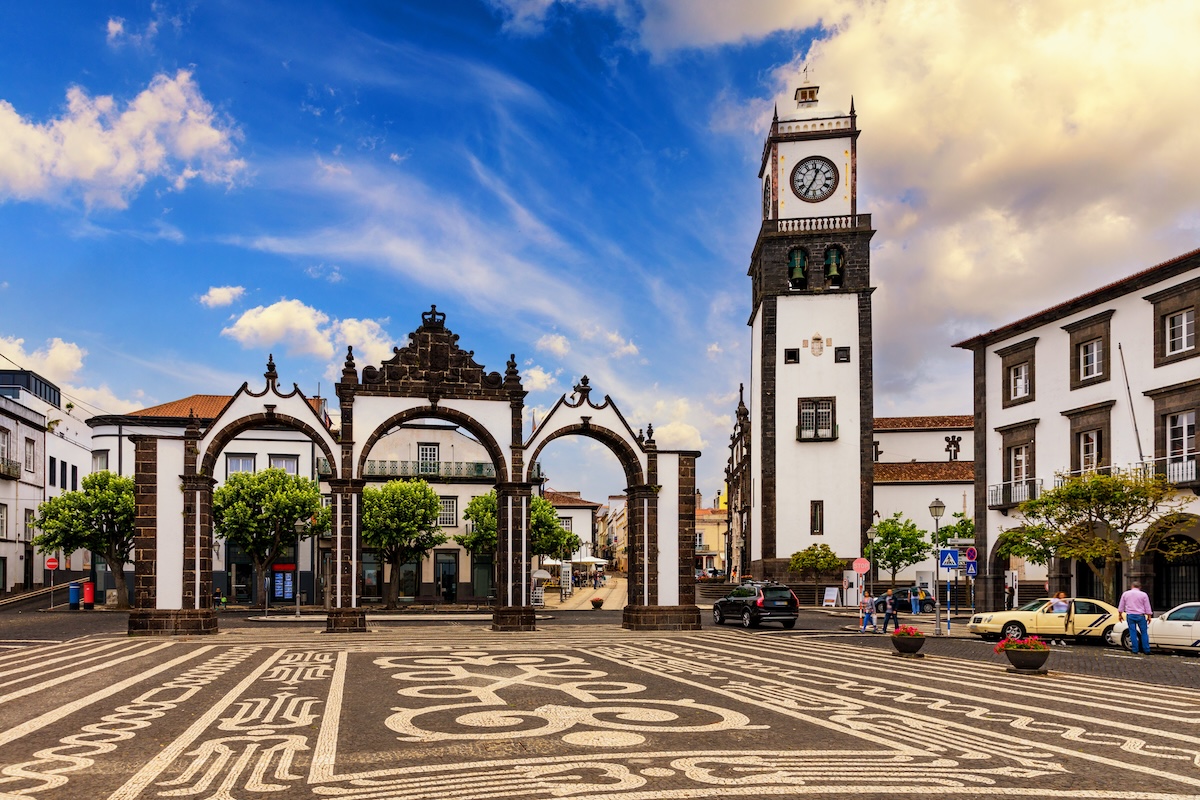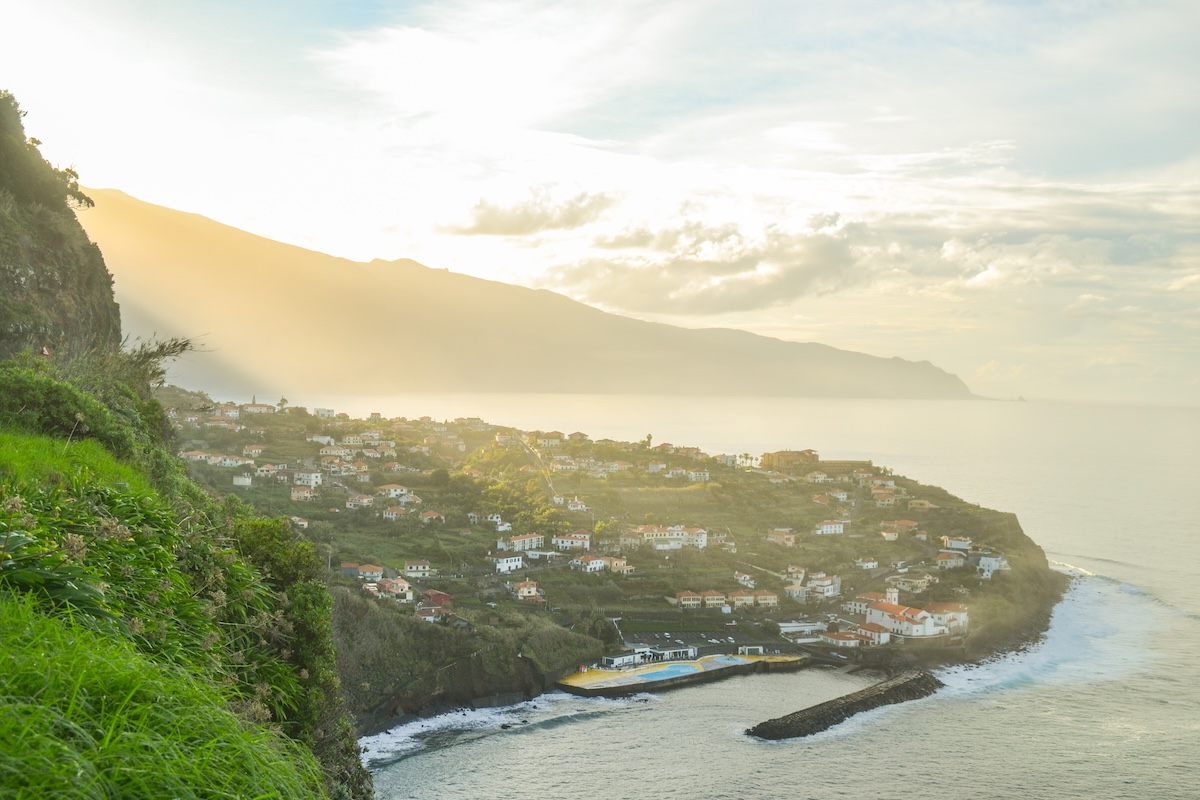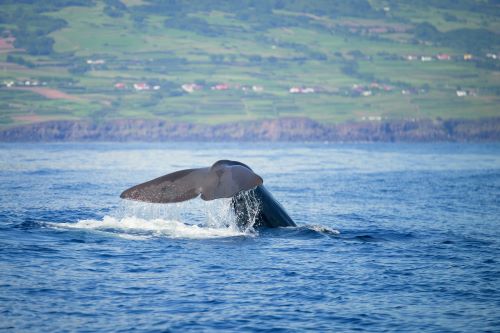News
São Miguel, Azores : your travel guide
Set in the middle of the Atlantic Ocean, São Miguel is often called the "green island" of the Azores. The name fits perfectly: volcanic peaks draped in forests, shimmering crater lakes, steaming hot springs and rolling green pastures make its breathtaking scenery. It is the largest island in the archipelago, yet still small enough to explore comfortably within a week.
The island combines dramatic landscapes with a relaxed pace of life and a touch of authenticity that feels far removed from mass tourism. Whether you are drawn to hiking, relaxing in natural thermal pools, spotting whales and dolphins, or simply enjoying the ocean breeze, Sao Miguel offers a wealth of experiences to discover.
1. Map of São Miguel
Lost in the heart of the North Atlantic, between mainland Portugal and the coasts of Canada, São Miguel is the largest island of the Azores archipelago.
Covering around 750 km², the island stretches 65 km in length and 16 km in width, with a long, narrow shape running from east to west.
Like the rest of the Azores, São Miguel lies in the North Atlantic Ocean. More precisely, it is positioned between Europe and North America, approximately:
1,500 km west of Lisbon, the capital of Portugal;
2,400 km east of Canada;
and about 1,900 km northwest of the Canary Islands
Completely surrounded by the Atlantic, São Miguel enjoys an exceptional marine biodiversity — whales, dolphins, sea turtles — as well as dramatic coastal landscapes. The island is also marked by geothermal activity, where volcanic forces meet the ocean, creating hot springs, fumaroles, and other natural wonders.
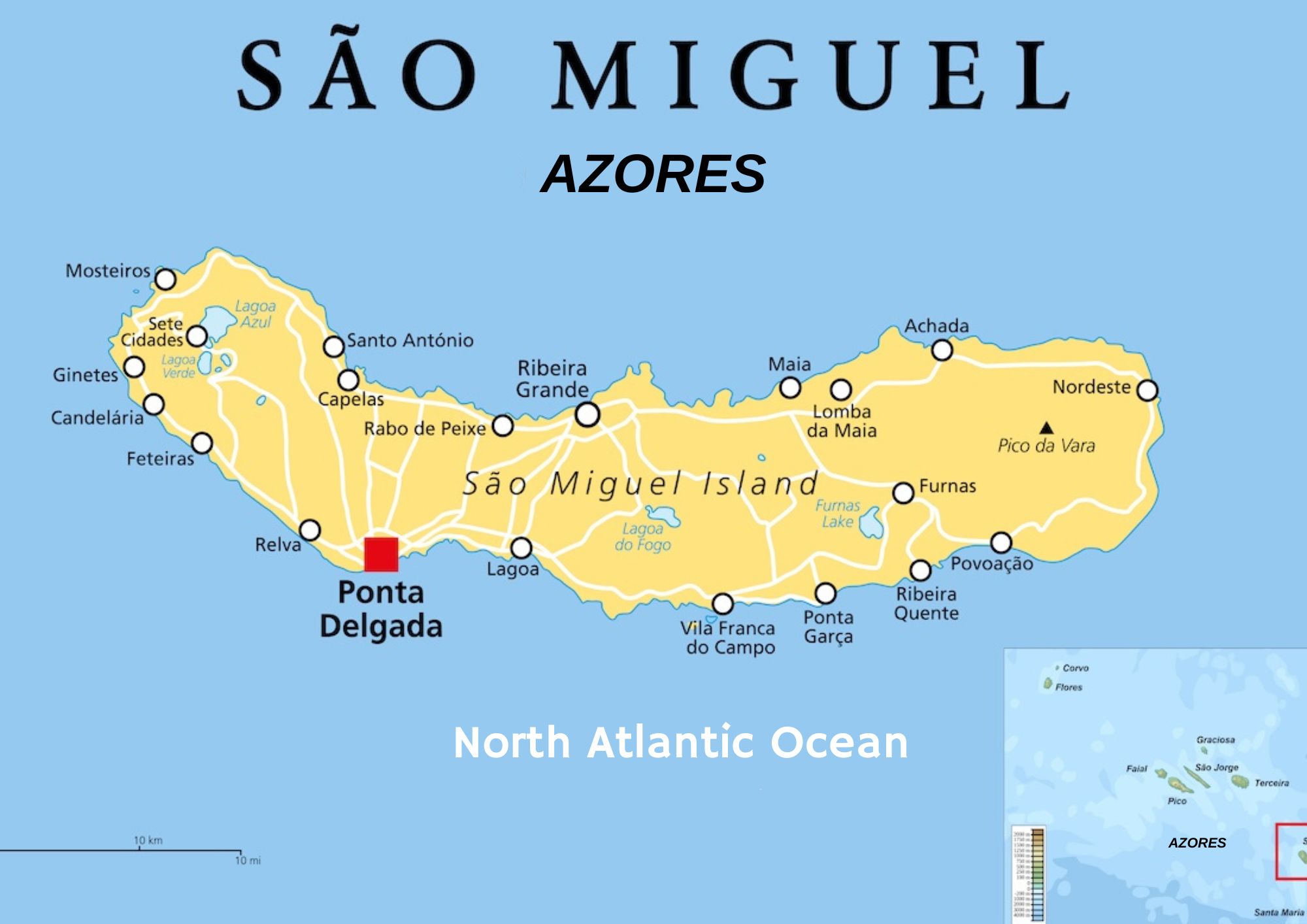
From Europe:
- There are direct flights from major European cities such as Lisbon, Porto, London, Frankfurt and Paris.
- Airlines like Azores Airlines, TAP Portugal, EasyJet and Ryanair operate frequent connections.
- Flight time from Lisbon: ~2.5 hours; from London: ~4 hours.
From the UK:
- Direct flights from London (Heathrow, Gatwick or Stansted) are available, mainly with Azores Airlines or TAP Portugal.
- Some budget airlines, like easyJet, offer seasonal connections.
- Typical journey: ~4 hours non-stop.
From the USA:
- There are direct flights from Boston (seasonal) with Azores Airlines and SATA International.
- Most US travelers connect via Lisbon or Porto, with a total journey of ~9–11 hours including layover.
From Australia:
- No direct flights; you need two or more connections, usually via Lisbon or another major European hub (London, Frankfurt, Paris).
- Total journey time: ~24–30 hours depending on connections.
2. Things to do and see in São Miguel
1. Sete Cidades
Sete Cidades is a dormant volcano on the island of São Miguel in the Azores. At 856 metres above sea level, it is topped by a vast five-kilometre-wide caldera, home to two legendary lakes: the Blue Lake and the Green Lake.
Highlights:
Miradouro da Vista do Rei – the most iconic viewpoint over the lakes. You can drive right up, with just a short walk from the car park.
Crater rim hike (PR3SMI – Sete Cidades): a 12 km circular walk (around 3.5 hours), easygoing and spectacular all the way. The trail follows the edge of the crater, with breathtaking views of both the lakes and the Atlantic Ocean.
Village of Sete Cidades: wander along the lakeshore, or hire a kayak or paddleboard for a different perspective on the water.
Getting there:
Around 30 minutes by car from Ponta Delgada, on excellent roads with plenty of parking.
👉 Top tip: go early in the morning to enjoy the views before the crowds arrive.
Viewpoint over Sete Cidades
2. Lagoa do Fogo
Lagoa do Fogo is a lake nestled inside the crater of an ancient volcano, right in the heart of the Água de Pau massif in central São Miguel, part of Portugal’s Azores archipelago. Sitting at 575 metres above sea level, it offers breathtaking views from the miradouro, where you can take in the entire crater and the island’s northern coastline.
Getting there:
From the EN5-2A road (between Ribeira Grande and Água de Alto), you can reach several miradouros (viewpoints) directly by car.
For a true immersion, the best option is the PR5SMI – Lagoa do Fogo hike: an 11 km circular trail (around 4 hours) with 400 m of elevation gain, starting from the Caldeira Velha hydroelectric plant.
Along the way you’ll walk through cryptomeria forests, across volcanic slopes, before reaching the magical shoreline of the lake itself.
Viewpoint over Lagoa do Fogo
You should know :
In summer, car access is limited to residents, but a shuttle runs from Caldeira Velha to the ridge for visitors.
Weather changes quickly — bring a jacket and check forecasts, as clouds can completely obscure the view.
3. Ponta da Ferraria
A rare spot where the ocean meets volcanic heat: here, the seawater is naturally warmed by an underground thermal spring.
What to do:
Swim in the natural rock pools at low tide.
Take the short footpath from the car park (swimwear and water shoes are a must).
Treat yourself to a wellness session at the Ferraria Spa (paid services).
Good to know:
Best to visit early or late in the day to avoid the crowds.
The access road is winding, but there is a car park on site.
Our trips to the Azores
4. Furnas and Terra Nostra
Set inside another vast crater, Furnas is famous for its natural hot springs and steaming fumaroles, where the traditional cozido stew is slow-cooked underground — a must-try local speciality!
Must-do experiences:
Terra Nostra Park: a lush botanical garden with a huge thermal pool rich in iron, naturally heated to 38°C — an unforgettable dip!
Poças da Dona Beija: in the evening, relax in candlelit thermal pools for a magical atmosphere.
Walk around Lagoa das Furnas: an easy 9 km circuit where you can see the steaming pits used to cook the famous cozido das Furnas.
Miradouro do Pico do Ferro: a stunning viewpoint overlooking the lake and surrounding crater.
Lagoa das Furnas - Steaming fumeroles
5. Caldeira Velha
Tucked away on the slopes of the Água de Pau volcano, Caldeira Velha feels like a hidden tropical oasis. Surrounded by lush ferns and steaming volcanic vents, it’s one of the most atmospheric places on São Miguel to enjoy the island’s geothermal wonders.
What to do:
Bathe in the natural thermal pools, with water temperatures ranging from warm to hot.
Swim beneath the small waterfall that flows into one of the pools.
Stroll along the short walking paths through lush vegetation, with signs explaining the island’s volcanic geology.
Good to know:
Access is easy by car from the EN5-2A road (between Ribeira Grande and Lagoa do Fogo).
Entry is ticketed and visitor numbers are limited, so it’s best to book ahead or arrive early.
Bring swimwear and a towel — changing facilities are available on site.
Caldeira Velha waterfall
6. Gorrena
On São Miguel’s north coast lies a true European treasure: Chá Gorreana, the oldest tea plantation in Europe still in operation. Founded in 1883, it produces between 33 and 40 tonnes of tea each year across its 32 hectares — mainly green tea (Hysson) and black teas (Orange Pekoe, Pekoe, Broken Leaf). Everything is grown 100% organically, without the use of pesticides.
Getting there:
Located between Maia and Ribeira Grande (in the municipality of Ribeira Grande), about 30 km from Ponta Delgada — less than a 40-minute drive.
What to do on site:
Walk through the plantations: follow the official PRC28 SMI trail, a 3.4 km loop (about 1h30) starting right in front of the factory. It winds through tea fields, cryptomeria forests, and offers views of the north coast.
Visit the factory and museum: free entry. You’ll see historic machines — some dating back to the late 19th century — and learn about the entire tea-making process, from harvesting the leaves to final packaging.
Gorrena tea-making
A bit of history
Tea was introduced to the Azores in the 19th century as a response to the orange cultivation crisis. Two experts from Macau arrived in 1878 to teach locals how to grow Camellia sinensis, and the Gorreana plantation was established in 1883 by the Gago da Câmara family.
The factory was even the first on São Miguel to be electrified, powered by a small hydroelectric plant that is still in operation today.
Tea cultivation is sustainable, using no herbicides, pesticides, or chemical fertilizers, producing 100% organic tea in harmony with the environment.
7. Janela do Inferno
Near the village of Remédios, the Janela do Inferno trail offers a surprising escape through green pastures, mysterious tunnels, and dense forest. Despite its dramatic name (“Window of Hell”), it’s actually a little slice of paradise.
Access:
The trail begins near Casa da Água, at the Remédios picnic area, which is accessible by car or taxi. Free parking, rest areas, toilets, and information panels mark the start of this official loop walk (~7.6 km).
Distance: ~7.6 km
Duration: 2h30 to 3h
Elevation gain/loss: ~240 m
Difficulty: Easy to moderate — ideal for families or casual hikers.
Hiking in Janela do Inferno
8. Ponta Delgada
Located on the south coast of São Miguel, Ponta Delgada is the largest city in the Azores archipelago. It is the cultural, economic, and historical hub of the island — and home to the airport, so most visitors arriving by plane will start their Azores adventure here.
What to see and do in Ponta Delgada:
Portas da Cidade
The “City Gates” are the iconic symbol of Ponta Delgada. This set of volcanic stone arches stands on Gonçalo Velho Square and marks the symbolic entrance to the historic centre. A must-stop for photos!
Jardim António Borges
A free public botanical garden offering a calm oasis in the heart of the city. Discover centuries-old trees, tropical plants, artificial caves, and small lakes — a perfect nature break between cultural visits.
Carlos Machado Museum
Housed in the former Santo André convent, this museum showcases the natural, artistic, and ethnographic history of the Azores. A fascinating way to learn about local traditions and the island’s heritage.
Baroque Churches
Igreja de São José – known for its elegant twin towers.
Igreja Matriz de São Sebastião – the main church facing the Portas da Cidade, combining Gothic and Manueline styles.
Convento da Esperança – a pilgrimage site linked to Senhor Santo Cristo dos Milagres, a revered religious figure throughout the archipelago.
9. Marine wildlife
The waters surrounding São Miguel are simply extraordinary. The island is encircled by a true ocean sanctuary, home to or visited by more than 28 different species of whales and dolphins.
Which species can you see?
Sperm whales – the most commonly spotted, present year-round.
Dolphins – common dolphins, bottlenose, Risso’s, spotted dolphins; very social and often seen in interactive pods.
Migratory baleen whales – blue, fin, sei whales, and occasionally humpback whales, depending on the season.
What to expect on a whale-watching trip:
Departures from Ponta Delgada (main port) or Vila Franca do Campo.
Trips are guided by marine biologists, who provide naturalist explanations and locate cetaceans using coastal lookouts and hydrophones (acoustic detection).
Choice of vessels: stable catamarans for comfort or fast zodiacs for a more adventurous experience.
High success rate: 98% chance of spotting a cetacean. If none are seen, most operators offer a free replacement excursion.
Whale off the coast of São Miguel
You're planning on travelling to the Azores soon and wish to know more about it ? We have writen out a complete travel guide to the Azores for you!
10. Hiking in São Miguel
1. Vista do Rei → Sete Cidades (PR3SMI)
- Distance: ~12 km loop
- Elevation gain/loss: ±250 m
- Estimated duration: 3–4 hours
- Difficulty: Easy to moderate, well-marked
What to know:
Start from the Miradouro da Vista do Rei car park and follow the crater rim, with breathtaking views of the Blue and Green Lakes. The panoramic section is relatively flat before descending into the caldera and then climbing back to the starting point (or starting from the village of Sete Cidades if doing a one-way route). The trail offers dreamlike vistas of the crater and ocean in the background and can be combined with a visit to Miradouro da Boca do Inferno.
2. Serra Devassa (PRC-05-SMI)
- Distance: 4.6 km (short variant) to 9.8 km (full route)
- Elevation gain/loss: ±138 m to ±399 m
- Estimated duration: 1h20 to 4h
- Difficulty: Easy to moderate
What to know:
The classic trail (4.6 km, 138 m elevation) starts at the Lagoa do Canário car park, gently climbs to Pico das Éguas (873 m), and descends along peatlands and ridges. The extended route (up to 9.8 km, 399 m elevation) also crosses Pico do Carvão and secondary lakes, offering a more varied panorama.
3. Salto do Prego (via Sanguinho - PRC-09-SMI)
- Distance: 4.5 km loop (or 8.5 km with extension to Salto do Cagarrão)
- Elevation gain: 150–220 m (up to 700 m on the extension)
- Estimated duration: 2h for the short loop; ~4h with the extension
- Difficulty: Easy to moderate, more technical on the extended section
What to know:
Start from the village of Faial da Terra, cross the valley to reach the Salto do Prego waterfall, where a swim is possible. The trail continues to Sanguinho, a restored historic village. Extending to Salto do Cagarrão adds roughly 4 km and a greater elevation gain, offering more challenging terrain and additional views.
In our opinion, the best time to visit São Miguel is from spring through the end of summer. Here’s why:
May to September (summer and early autumn)
- Offers the best weather conditions: pleasant temperatures between 18–24°C, little rain, low humidity, and long days — perfect for hiking, beach days, and ocean excursions.
Spring (March to May)
- Ideal for nature lovers. Temperatures are mild (around 12–17°C), trails are less crowded, vegetation is in full bloom (wildflowers and hydrangeas), and prices are generally lower than in summer.
Autumn (September to November)
- Still mild (17–22°C), with romantic golden landscapes, fewer visitors, and sometimes lower rates than peak season.
Winter (December to February)
- Cooler temperatures (10–14°C) and more frequent rain.
- Very low crowds, attractive rates, and a peaceful atmosphere — perfect for exploring Furnas or Sete Cidades without the tourists.
Day 1
Arrival in São Miguel - Ponta Delgada
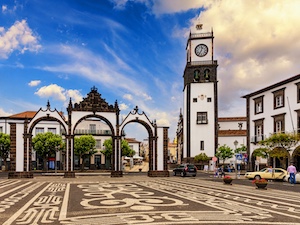
Upon arrival at Ponta Delgada Airport, you’ll be welcomed and transferred to your hotel in the city centre. Depending on your arrival time, enjoy a stroll through the historic centre and explore the local market. Overnight stay at a city-centre hotel.
Day 1
Day 2
Sete Cidades - Caldeira
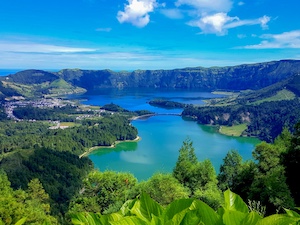
Visit the Sete Cidades caldera and its Blue and Green Lakes. Walk the viewpoints, try kayak or paddleboarding, and finish with a dip in Ponta da Ferraria’s natural hot pools.
Day 3
Lagoa do Fogo
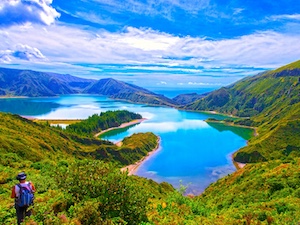
Hike around Lagoa do Fogo, a volcanic crater lake, and discover unique endemic flora and fauna. Return to your hotel in the evening.
Day 3
Day 4
Whale watching - Furnas
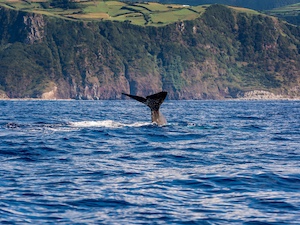
Morning whale and dolphin tour with a marine biologist. Afternoon relax in Furnas’ hot springs and enjoy walks around the town.
Day 5
Caldeira de Furnas & Terra Nostra gardens
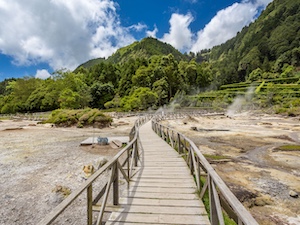
Hike to Pico do Ferro viewpoint, explore Furnas’ geothermal sites and lush Terra Nostra gardens, with free time to enjoy the hot springs.
Day 5
Day 6
Faial de Terra & Salto do Prego
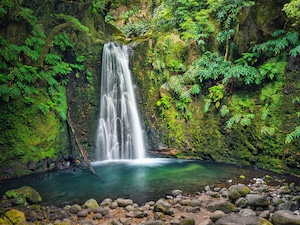
Hike through a green valley to Salto do Prego waterfall, with optional swim. Afternoon visit to a tea plantation or relax in hot springs.
Day 7
Janela do Inferno
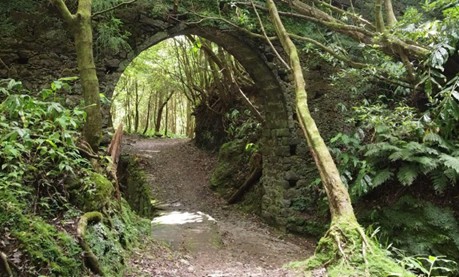
Hike through a pristine landscape, passing tunnels and enjoying spectacular canyon views. Return to your hotel for the final night on São Miguel.
Day 7
Day 8
End of the trip
After a week of exploring São Miguel, return your rental car and catch your flight home, leaving with a head full of memories.
Yes, you can island hop in the Azores. All ferries on the Azores are run by the same company called Atlanticone.
In summer, you can expect the water temperatures to be around 25°C, but as it is the North Atlantic, the sea doesn't usually get any warmer than that.


